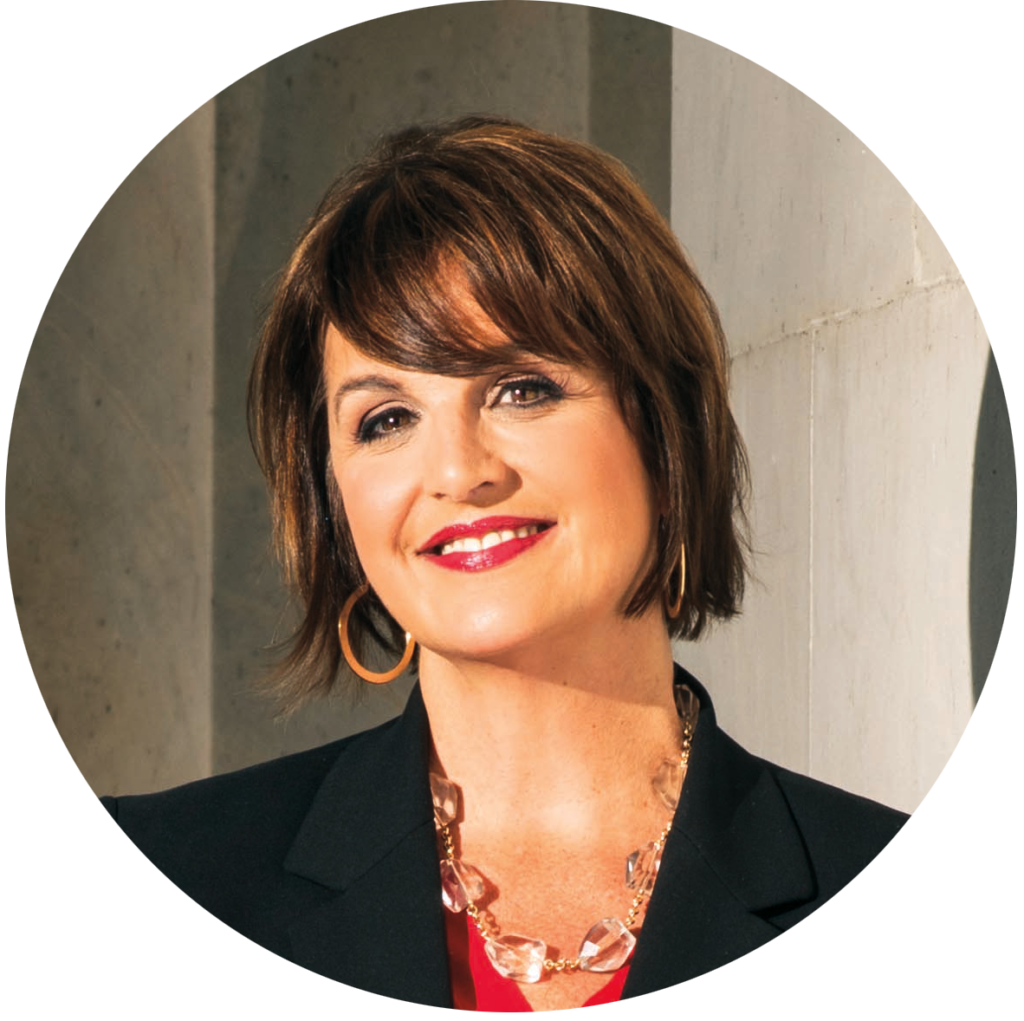
Big Brother and the New Ministry of Truth:
How President Trump’s Executive Order May have Disastrous Consequences for Religious Freedom
Kristina Arriaga
Black and Silver Laptop Computer, Jolo Diaz, Pexels
Last month, for the first time ever, Twitter fact-checked two presidential tweets. In response, President Donald Trump issued an executive order which would, in essence, eliminate a pillar of U.S. internet law, the protections contained in Section 230 of the Communications Decency Act (CDA 230). CDA 230 gives interactive internet platforms immunity from many kinds of liability for speech posted by users, and further protects such platforms from liability for restricting users’ access to material the platform deems objectionable or communicating its objections to certain content to viewers, provided that such internet platforms do so in good faith. Through a series of administrative steps, the executive order converts the Federal Communications Commission (FCC) into a quasi-administrative court to determine if platforms are acting in “good faith” when moderating user content or are undertaking “deceptive or pretextual” practices. It may sound like a good idea to ensure that social media platforms are held accountable for their content and for the government to get involved in ensuring fairness. But, eliminating CDA 230 would likely result in a governmentally-enforced high-tech book-burning and one of its first victims is likely to be freedom of religion or belief.
CDA 230 is vital to social media because it contains a “Good Samaritan” clause that protects platforms that “in good faith” restrict “access to or availability of material that the provider or user considers to be obscene, lewd, lascivious, filthy, excessively violent, harassing, or otherwise objectionable, whether or not such material is constitutionally protected.” In practice, this means that platforms such as Twitter, Facebook, and YouTube can create their own community engagement rules and decide to remove user content that may otherwise be protected by the First Amendment without facing the threat of legal action. CDA 230 immunity also supports innovation and start-ups, allowing smaller entities to allow or remove controversial user posts without having to retain an army of expensive lawyers to clear user content or vet reams of regulatory standards for posting or removal.
…eliminating CDA 230 would likely result in a governmentally-enforced high-tech book-burning and one of its first victims is likely to be freedom of religion or belief.
It would be understandable if some legal scholars dismiss the potential impact of the President’s new executive order. After all, the legal strength of the order remains to be seen, and like all executive orders, Mr. Trump’s order could be reversed by the next administration. Besides, the language of the executive order is so broad that it would be hard to imagine many judges taking the order too seriously. However, since its issuance, several pundits have commented on its potential real-life repercussions. The New York Times, for instance, called the EO “bullying” and a “dumpster fire.” But it added, “when it fails in court, it may nonetheless have succeeded in its goal of intimidating social media companies into not doing what the First Amendment gives them the right to do.” A writer for VOX stated: “It won’t hold up in court. That’s not the point.” And, on June 2, the Center for Democracy and Technology filed the first legal challenge against the order stating the order will “curtail and chill constitutionally protected speech” during the presidential election.
Most of the public commentary on the executive order centers on three assumptions. First, that it would only apply to big tech; second, that the order is intended solely to influence the culture wars affecting the upcoming elections (i.e., the Trump right-wing base vs. “leftist” Silicon Valley); and, finally, that the executive order will exist only in the federal government realm. But the truth is that the order affects much more than just big tech, is more expansive than political speech, and is not limited to the federal government.
The order defines an “online platform” as “any website or application that allows users to create and share content or engage in social networking, or any general search engine.” This means it applies to the neighborhood church, synagogue, or temple’s Facebook, Twitter, and YouTube account or to any other platform religious groups may use. The order also calls for the Department of Justice to “develop model legislation for consideration by legislatures in States where existing statutes do not protect Americans from such unfair and deceptive acts and practices.” Finally, the EO’s vagueness makes for dangerous bureaucratic rulemaking when it comes to religious freedom.
It is telling to look at other countries where CD-230-like protections do not exist. In these countries, social media platforms are often pushed into censoring posts that are contrary to government views or face censorship themselves. Inevitably, in countries without robust protections for freedom of religion, religious pluralism is further eroded. In Egypt, for instance, an administrative court ruled in 2018 that regulators must block YouTube for one month because of a video the government felt “denigrates the Prophet Mohammad.” Similarly, the governments of Afghanistan, Bangladesh, Sudan, and Pakistan blocked the entire YouTube domain over a controversial 14-minute trailer about a film on Mohammad, Innocence of Muslims.
Innocence of Muslims is an amateurish, poorly-filmed, low-budget video which first aired in 2012, was translated into Arabic, and promoted by Florida Pastor Terry Jones of “burn-a-Koran-day” fame. The worldwide violent demonstrations against the trailer resulted in several attacks on U.S. embassies widely documented in international media. In response to the violence, President Barack Obama asked YouTube to remove the film. At one point, sensing the rising tensions in Egypt, the US Embassy in Cairo posted: “Respect for religious beliefs is a cornerstone of American democracy. We firmly reject the actions by those who abuse the universal right of free speech to hurt the religious beliefs of others.” The post was removed the next day, but became a source of political discussion about our government’s stance on First Amendment jurisprudence. Is it “abuse” to “hurt” the religious belief of others?
Is it “abuse” to “hurt” the religious belief of others?
In 2014, two years after the worldwide violence, the controversial video made its way into U.S. courts. In Garcia v. Google, an actress, Cindy Lee Garcia, who appeared for five seconds in the trailer, sued Google on copyright grounds. Garcia’s brief performance had been dubbed over, so she appeared to be asking: Is your Mohammed a child molester?” (See Eugene Volokh’s analysis on the copyright claims on this case, and this discussion of the case’s potential impacts on the entertainment industry.) Inexplicably, on February 19, 2014, a split panel of the Ninth Circuit Court of Appeals agreed with the actress and issued a secret gag order directing Google not only to take down all copies but also prohibiting the company from making any public statements about the gag order. A week later, February 26, the court released its opinion to the public. The chief judge, writing for the majority, starts his opinion by remarking: “These, of course, are fighting words to many faithful Muslims…” In 2015, in an en banc decision, the Ninth Circuit Court of Appeals stated the judges had infringed on the platform’s First Amendment rights and ruled that Google, which owns YouTube, should not have to take down the video. Google’s attorney rightly argued: “The ultimate effect is to harm the marketplace of speech.”
To be clear, Google was not involved in making the movie. Google merely allowed the controversial content. Additionally, although the 2014 opinion does not mention Section 230, this important provision “casts a long shadow on the discussion.” A legal expert on these matters argues, if the actress had claimed anything else than copyright, CDA 230 would have protected YouTube.
If President Trump’s executive order strips all Section 230 protections from social media platforms, and gives power to the government regulatory agencies, bureaucrats will be in charge of determining whether platforms act “in good faith.” This will inevitably move the complex discussions associated with freedom or religion or belief, First Amendment Rights, religious speech, offense, insult, blasphemy, and private speech rights to administrative agencies. A panel of judges in the Ninth Circuit almost tipped the scales against Google’s First Amendment rights because of “fighting words” in a script in a 14-minute trailer. Imagine what bureaucrats will do with truth claims made in the name of freedom of religion or belief if given control on user content moderation. Watch out houses of worship – big and small – big brother may be coming your way. ♦

Kristina Arriaga de Bucholz has spent twenty-five years advocating for freedom of speech and for religious freedom. She has worked at a U.S.-based public interest law firm and has served as a member of the U.S. delegation to the United Nations Human Rights Council in Geneva, the U.S. delegation to the Organization for Security and Cooperation in Europe, the U.S. Commission on Civil Rights, and, as Vice-Chair, the U.S. Commission on International Religious Freedom. She is a candidate for a Doctorate of Philosophy in Law at the University of Oxford.
Recommended Citation
Arriaga, Kristina. “Big Brother and the New Ministry of Truth: How President Trump’s Executive Order May have Disastrous Consequences for Religious Freedom.” Canopy Forum, June 15, 2020. https://canopyforum.org/2020/06/15/big-brother-and-the-new-ministry-of-truth/

